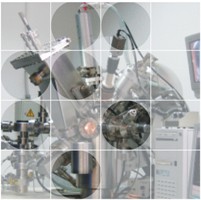|
SURFACE ENGINEERING - F4
Head of Department Secretary Plasma sources Low pressure and atmospheric gaseous discharges are applied to generate plasma of desired characteristics. The department has specialized in electrode-less discharges powered with radio-frequency and microwave generators using optimized coupling. Optical emission and absorption techniques as well as mass spectrometry, electrical and catalytic probes are used for characterization of glowing plasma and afterglow. The group has developed original versions of catalytic probes for space-resolved measurements of neutral reactive radicals. Discharge cleaning (removal of organic as well as inorganic impurities from surfaces of two and three dimensional objects), Selective plasma etching of composite materials, Activation and passivation of polymers and polymer composites, Plasma nano-medicine (cardiovascular implants, wound dressings, sterilization, diagnostic methods), Plasma nano-science (quantum dots, nanowires, nanocomposites, complex nanostructures). Pure and applied surface science, surface characterization using ToF- SIMS, XPS, AES and AFM techniques, depth profiling, reactions on surfaces and interfaces, micro-analyses, structural and compositional modifications of solid materials upon treatment with energetic ions. Methods for sustenance different grades of vacuum, vacuum metrology, adsorption desorption and permeation of gases through solids, vacuum optoelectronics, development of vacuum devices and components like cathode tubes, insulation panels and made-to-order vacuum elements. |
J. Stefan Institute, Jamova 39, 1000 Ljubljana, Slovenia, Telephone: +386 1 477 39 00 |

